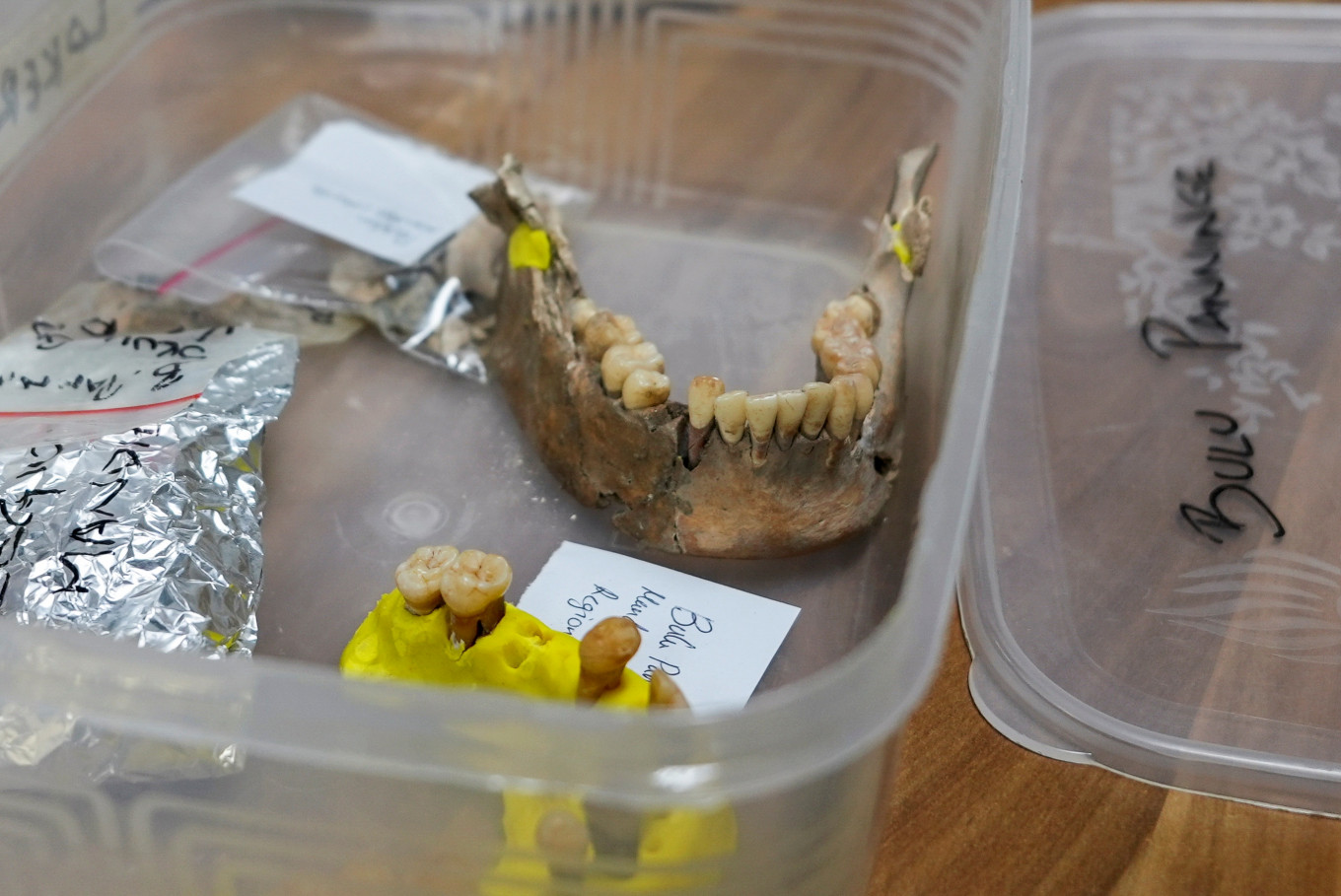Popular Reads
Top Results
Can't find what you're looking for?
View all search resultsPopular Reads
Top Results
Can't find what you're looking for?
View all search resultsAncient Indonesian woman reshapes views on spread of early humans
Theories about early human migration in Asia could be transformed by the research published in the scientific journal Nature in August, after analysis of the deoxyribonucleic acid (DNA), or the genetic fingerprint, of the woman who was given a ritual burial in an Indonesian cave.
Change text size
Gift Premium Articles
to Anyone
G
enetic traces in the body of a young woman who died 7,000 years ago furnish the first clue that mixing between early humans in Indonesia and those from faraway Siberia took place much earlier than previously thought.
Theories about early human migration in Asia could be transformed by the research published in the scientific journal Nature in August, after analysis of the deoxyribonucleic acid (DNA), or the genetic fingerprint, of the woman who was given a ritual burial in an Indonesian cave.
"There is the possibility that the Wallacea region could have been a meeting point of two human species, between the Denisovans and early homo sapiens," said Basran Burhan, an archaeologist from Australia's Griffith University.
Burhan, one of the scientists who participated in the research, was referring to the region of Indonesia that includes South Sulawesi, where the body, buried with rocks in its hands and on the pelvis, was found in the Leang Pannige cave complexes.
The Denisovans were a group of ancient humans named after a cave in Siberia where their remains were first identified in 2010 and scientists understand little about them, even details of their appearance.
The DNA from Besse, as the researchers named the young woman in Indonesia, using the term for a new born baby girl in the regional Bugis language, is one of the few well-preserved specimens found in the tropics.
It showed she descended from the Austronesian people common to Southeast Asia and Oceania but with the inclusion of a small Denisovan portion, the scientists said.



















